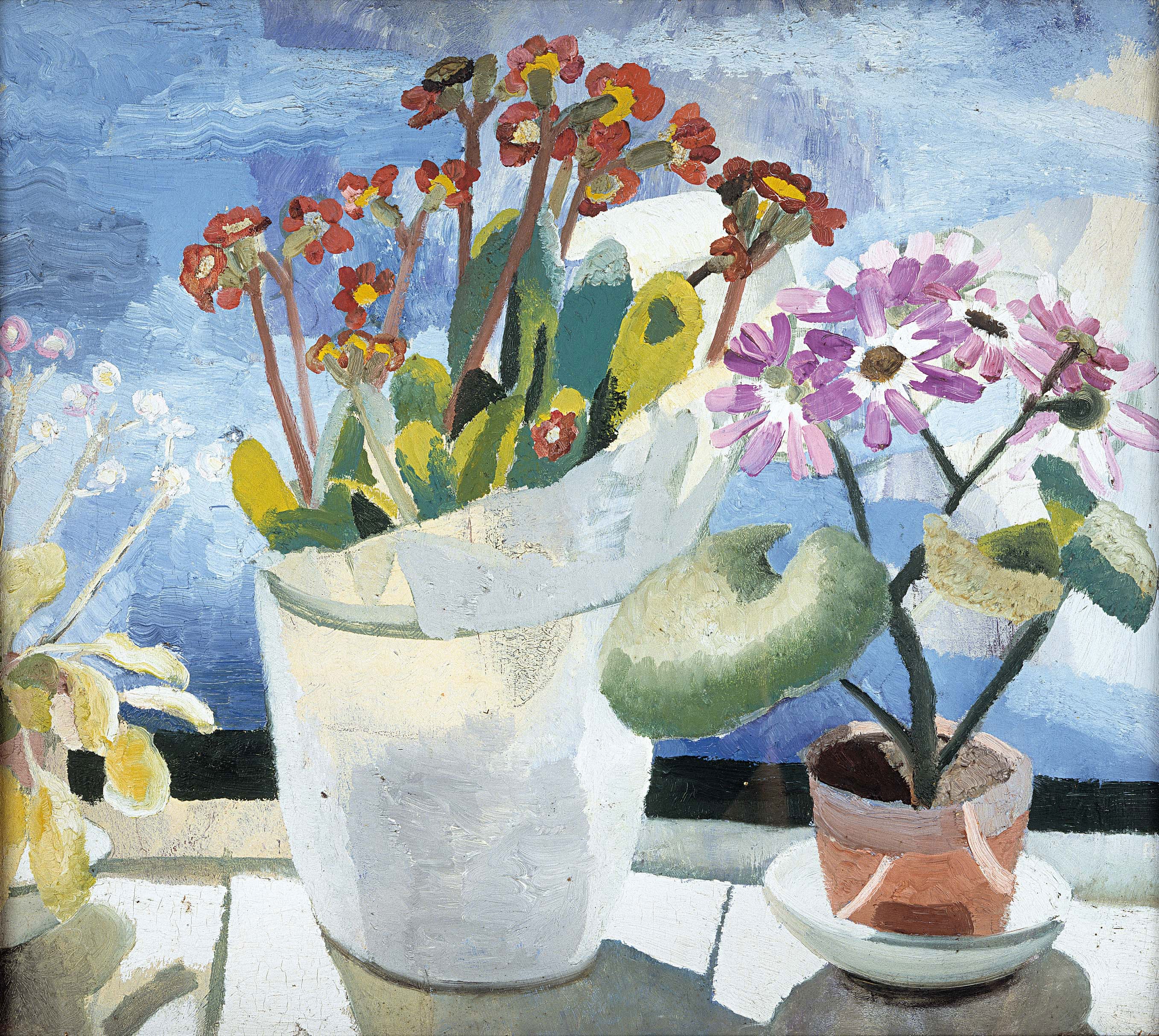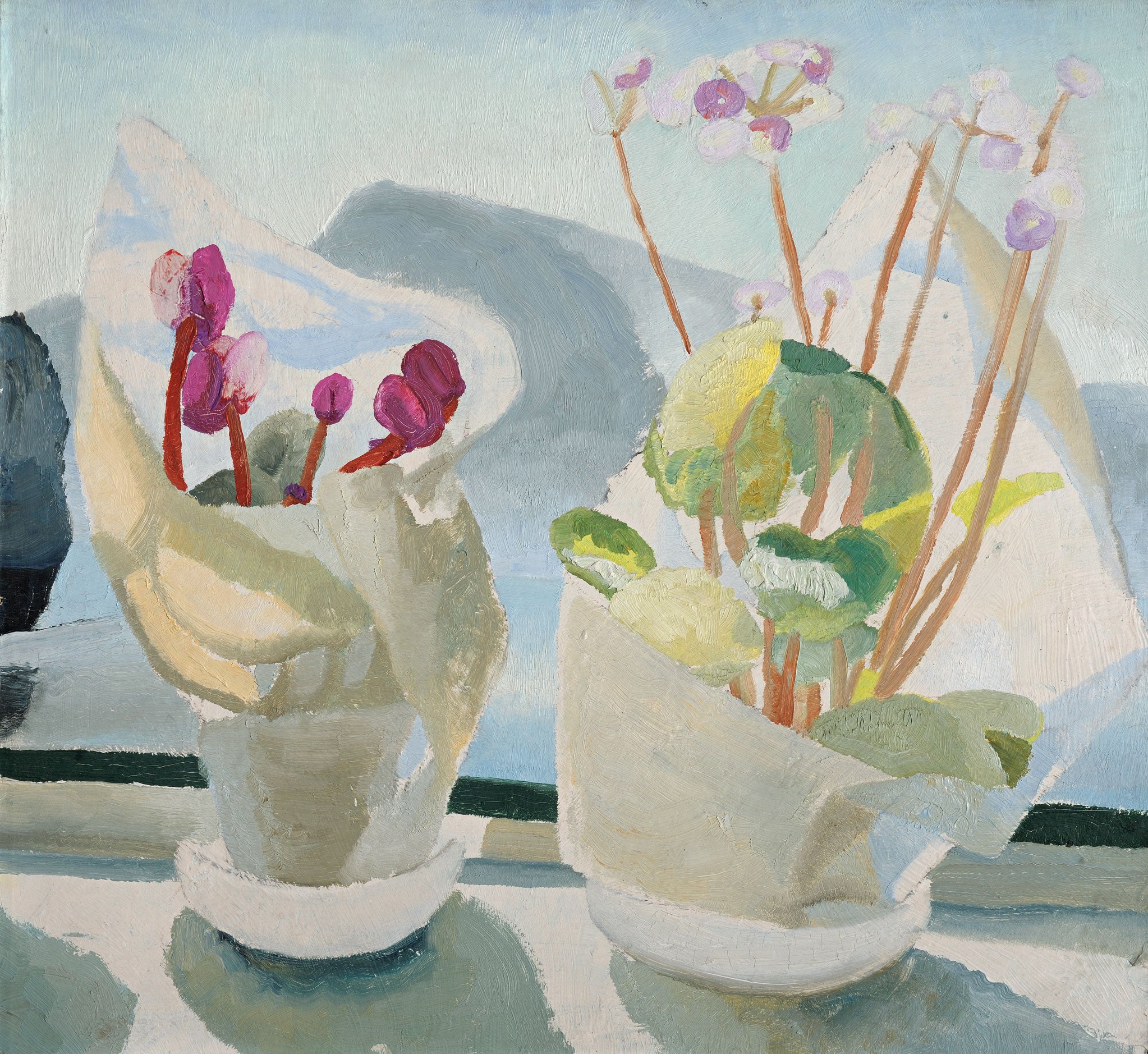Winifred Nicholson: The early flowering of the first Mrs N
Winifred Nicholson’s work, elbowed out by abstraction, deserves a second look

When British artists and taste-makers collaborated on the groundbreaking 1956 exhibition This is Tomorrow, at the Whitechapel Gallery in east London, a lot of thought went into the make-up of the group that would show a new form of art. And two names were voted out: Ben Nicholson and Barbara Hepworth. Since the Thirties, the pair had been such a dominating force in British modern art that only excluding them was going to push painting and sculpture into new and collegiate areas, notably pop.
But Nicholson and Hepworth’s status as art royalty both as a couple – they met in 1930, married in 1938 and parted in 1951 – and individually, overshadows an earlier artistic and domestic partnership for Nicholson that is revisited in an exhibition at Dulwich Art Gallery in south London. Art and Life 1920-1931, featuring work produced during the marriage of Nicholson to Winifred Roberts, looks at the early influences on the artist who would arguably reach his peak with the white reliefs of the mid-Thirties, and at the young wife who not only travelled with him, discovering European art and recording the same scenes, but also forged relationships with artists in Paris that were to transform British art.
Ben and Winifred Nicholson both came from comfortable and distinguished homes with strong artistic leanings. Ben’s father, William, was a respected painter, his grandfather a Tory MP. Winifred Roberts’s aristocratic mother was a gifted amateur artist, her father a prominent Liberal MP. Through her mother’s connections she had access to the great private art collection at Castle Howard where, as a child, she saw the work of the British titans Gainsborough and Reynolds and Italian masters including Titian.
That she came face to face with this great colourist at an impressionable age may account for her own fixation with colour, where her young husband was seeing form. Jovan Nicholson, curator of the exhibition and grandson of the couple, recalls that the pair were, on one occasion, equally transfixed by a Picasso painting: “She talks about a green ‘as swift as a viper’. Ben calls it one of the most real paintings he had ever seen.” Frustratingly, for it holds a key to the couple’s thinking, scholars cannot agree on which picture so inspired them.
That flash of green, however, lights the way into the work of Winifred, whom her grandson believes to be unfairly neglected: “There have been a number of theories why she hasn’t been included in the story [of British Modernism].... There have been exhibitions when she should have had pictures included and didn’t. I don’t know why.”
Two elements, arguably, put Winifred in the shade. One was Ben’s relationship 10 years into the marriage with Hepworth, whose sculpted abstract forms were to become such a landmark in British art history that they were as at home on shop corners (Winged Figure at John Lewis on Oxford Street) as they were in private or public collections.

The other element was Winifred’s penchant for flowers. Despite painting alongside Ben for many years – he destroyed this early work, suggesting, writes Sebastiano Barassi in the exhibition’s very fine catalogue, that she was the better artist at this stage – Winifred’s favourite subject matter was not obviously innovative. Although she experimented with the new, abstract, art, while always using colour over form to make a statement, her favourite subject sounds traditional: “I like painting flowers,” she said simply. “I have tried to paint many things in many different ways, but my paintbrush always gives a tremor of pleasure when I let it paint a flower … to me they are the secret of the cosmos.”
But Winifred’s flowers are not merely decorative, nor are they botanical records. They are, to her, attractively unruly, and thrillingly coloured. She particularly loves the way that magenta makes a mixed bunch leap into life. Her favourite composition – flowers in a vase (the pot itself probably made by William Staite Murray, whose work is also in the show) – on a windowsill, with a landscape behind, created challenges of plane and perspective – the same things that Ben was looking at, and that had absorbed the early Italian artists whose work they saw on their travels as newly-weds.
The couple met in the summer of 1920 and married within months. They headed for the mainland of Europe, seeing great work in colour, not just in monochrome engravings, youthfully confident in their critical analysis: “Paris is choc a block full of 2nd rate, 3rd, 4th 5th … & 198th rate modern work,” Winifred wrote home. “Modigliani is good example of No. 2. Derain, Picasso, Matisse have had the impertinence to contribute a no. of No. 1’s. Dufy … is fairly moderate 7th rate. But they (bar select few) have all lost the p[oin]t of painting & are ‘modern’, dated, local. It is all froth. And certainly lack one of the main fundamentals which is SINCERITY.” But they were captivated by the early Italian masters, especially Giotto, Gozzoli, and Piero della Francesca.
By the late Thirties, Winifred’s well-trained eye would spot a winner. In Paris, she befriended Nahum Gabo, Jean Hélion, and Giacometti, and purchased work by all of them. And although Ben is perceived as the great champion of Mondrian, it was Winifred who was the first British collector to buy a Mondria piece, and it was she who accompanied the artist to Britain from Paris in 1938.
“I have seen his eyes when he looked at fields out of the train window,” she wrote of the great champion of geometric abstraction. “He said that it was the passing of the verticals of telegraph poles across that horizontal of the horizon that he was watching with such eagerness. But was it? … Was it the sunset radiance over the spring green meadows?”
Possibly not: Mondrian hated green. But Winifred was vigorous in her defence of plants: “They know more geometry than Pythagoras,” she wrote, “and all sunflowers practice mathematical law in the spiral arrangement of their seeds .... They will show how to turn light into rainbows.”
‘Life and Art’, Dulwich Picture Gallery (dulwichpicturegallery.org.uk), from Wednesday to 21 Sept
Join our commenting forum
Join thought-provoking conversations, follow other Independent readers and see their replies
Comments